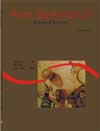<b>Stocking density influence on matrinxã fingerlings (<em>Brycon cephalus</em>) (Günther, 1869), culture on experimental conditions</b> - DOI: 10.4025/actascibiolsci.v26i1.1670
Abstract
The aim of the present experiment was to evaluate the influence of stocking density on the culture of 300 matrinxã fingerlings (Brycon cephalus), of 2.0 ± 0.82g initial weight and 5.7 ± 0.74cm initial length, distributed in 20 ponds (250-L). The utilized experimental design was entirely randomized in four treatments (6, 12, 18 e 24 ind/pond, corresponding to 24, 48, 72, e 96ind/m3) and five replications. The food consisted of a commercial ration of 36% of crude protein, that was supplied ad libitum six times a day during 45 days. A positive linear relation (p < 0.05) in biomass, in feed conversion and in size variation weight were verified, due to the higher level of the densities and a quadratic effect (p < 0.04) in ration intake. Otherwise, the final weight, weight gain, final length, survival and factor of condition were not affected (p > 0.05) for the different stocking densities. The values of physical and chemical parameters remained at adequate levels for fish culture, although densities influenced these values during some days of the experiment. Results showed that the density of 96ind/m3 is the highly recommended, because higher total biomass was observed, which did not affect the fish weight gainDownloads
Download data is not yet available.
Published
2008-04-01
How to Cite
Marques, N. R., Hayashi, C., Furuya, W. M., & Soares, C. M. (2008). <b>Stocking density influence on matrinxã fingerlings (<em>Brycon cephalus</em>) (Günther, 1869), culture on experimental conditions</b> - DOI: 10.4025/actascibiolsci.v26i1.1670. Acta Scientiarum. Biological Sciences, 26(1), 55-59. https://doi.org/10.4025/actascibiolsci.v26i1.1670
Issue
Section
Biology Sciences
DECLARATION OF ORIGINALITY AND COPYRIGHTS
I Declare that current article is original and has not been submitted for publication, in part or in whole, to any other national or international journal.
The copyrights belong exclusively to the authors. Published content is licensed under Creative Commons Attribution 4.0 (CC BY 4.0) guidelines, which allows sharing (copy and distribution of the material in any medium or format) and adaptation (remix, transform, and build upon the material) for any purpose, even commercially, under the terms of attribution.
Read this link for further information on how to use CC BY 4.0 properly.
0.6
2019CiteScore
31st percentile
Powered by 

0.6
2019CiteScore
31st percentile
Powered by 











1.png)




3.png)













